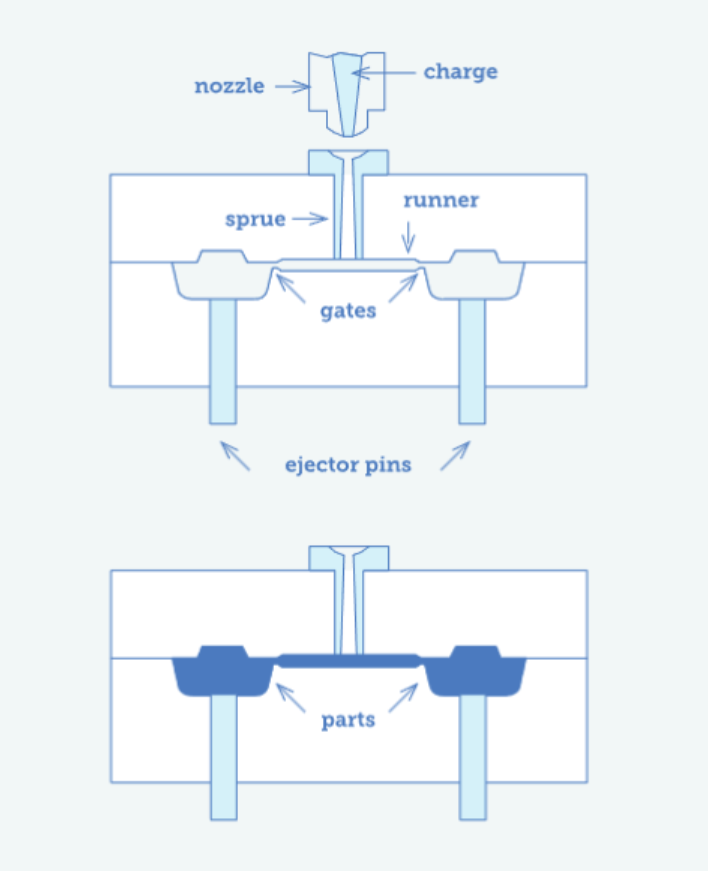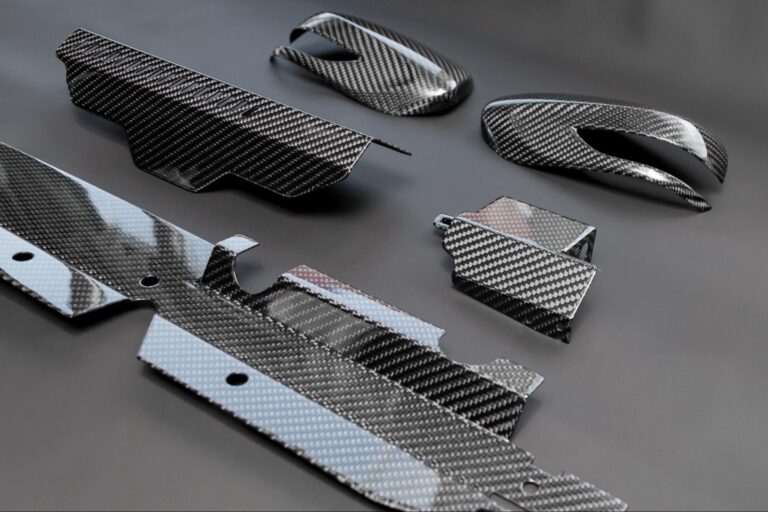Time to read: 5 min
Fictiv offers a variety of 3D printing materials and can produce parts using Stereolithography (SLA), Selective Laser Sintering (SLS), Fused Deposition Modeling (FDM), Multi Jet Fusion (MJF), and Carbon Digital Light Synthesis (DLS) technologies. For each of these 3D printing processes, the table below lists the available materials and colors along with their average lead times:
| Process | Material | Color | Lead Time |
| Stereolithography (SLA) | Accura 25 | White | 3 days |
| Accura 60 | Clear | 3 days | |
| Accura ClearVue | Clear (Colorless) | 3 days | |
| Accura Xtreme White 200 | White | 3 days | |
| Accura Xtreme Grey | Grey | 3 days | |
| Selective Laser Sintering (SLS) | Nylon | White Black | 3 days |
| Nylon 12 Glass-Filled (Duraform GF) | White | 3 days | |
| Polyjet | ABS-Like | Off-White | 2 days (standard) 1 day (rush) |
| Rubber-Like | Black | 2 days (standard) 1 day (rush) | |
| Vero | White Black | 1 day (rush) | |
| VeroClear | Clear | 2 days (standard) 1 day (rush) | |
| Multi-Jet Fusion (MJF) | Nylon | Black Grey | 3 days |
| Nylon 11 | Grey | 9 days | |
| Polypropylene | Grey | 9 days | |
| Fused Deposition Modeling (FDM) | ABS | Black White Neutral | 1 day |
| ABS ESD | Black | 3 days | |
| ASA | Black Grey Natural White | 3 days | |
| PC+ABS | Black White | 3 days | |
| Polycarbonate (PC) | Black White | 3 days | |
| PETG | Black White Neutral | 2 days | |
| PLA | Neutral, White, Black, Blue, Red, Orange, Green, Pink, Aqua | 1 day | |
| Carbon Digital Light Synthesis (DLS) | EPU 40 | Black | 5 days |
| EPU 41 | Black | 5 days | |
| EPX 82 | Black | 5 days | |
| EPX 86FR | Black | 5 days | |
| FPU 50 | Black | 5 days | |
| MPU 100 | White | 5 days | |
| RPU 70 | Black | 5 days | |
| SIL 30 | Gray | 5 days | |
| Loctite 3D IND405 | Clear | 5 days | |
| Loctite 3D IND147 | Black | 5 days | |
| Loctite 3D 3843 | Matte Black | 5 days | |
| UMA 90 | WhiteBlack | 4 days |
3D Printing Materials from Fictiv
This article discusses all of our 3D printing materials, but you can get a more in-depth look into our 10 new 3D printing materials here. And, if you’re still refining your designs, our free calculator makes it easy to understand the tolerance stack up of your 3D-printed parts so you can make sure they fit together.
Download our free tolerance analysis calculator here.
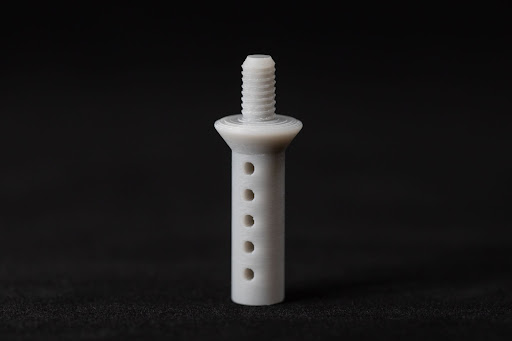
SLA materials include Accura Xtreme Grey
SLA Materials
Stereolithography (SLA) is a high-resolution process that uses ultraviolet (UV) light to cure a thermoset liquid in layers. It supports the following materials:
- Accura 25 is a durable, flexible 3D printing material with a hardness of 80 Shore D.
- Accura 60 produces strong, rigid parts with the look and feel of polycarbonate.
- Accura ClearVue is translucent and moisture-resistant with a smooth, durable finish.
- Accura Xtreme White 200 is a tough, high-performance resin with high impact resistance.
- Accura Xtreme Grey compares well to engineering plastics and has an opaque grey color.
The table below lists SLA materials with available colors and lead times:
| SLA Material | Color | Lead Time |
| Accura 25 | White | 3 days |
| Accura 60 | Clear | 3 days |
| Accura ClearVue | Clear (Colorless) | 3 days |
| Accura Xtreme White 200 | White | 3 days |
| Accura Xtreme Grey | Grey | 3 days |
SLA materials from Fictiv
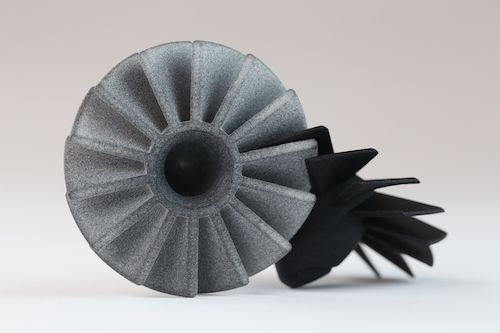
SLS materials include Nylon 12 Glass-Filled (Duraform GF)
SLS Materials
Selective Laser Sintering (SLS) uses a high-power laser to sinter particles of powdered material. SLS materials include nylon and glass-filled nylon 12, which is also known as Duraform GF.
- Nylon is strong and durable with a thermal resistance up to 177° C.
- Glass-filled nylon adds powdered glass to nylon resin for improved strength and heat resistance.
The table below lists SLS materials with available colors and lead times:
| SLS Material | Color | Lead Time |
| Nylon | White Black | 3 days |
| Nylon 12 Glass-Filled (Duraform GF) | White | 3 days |
SLS materials from Fictiv
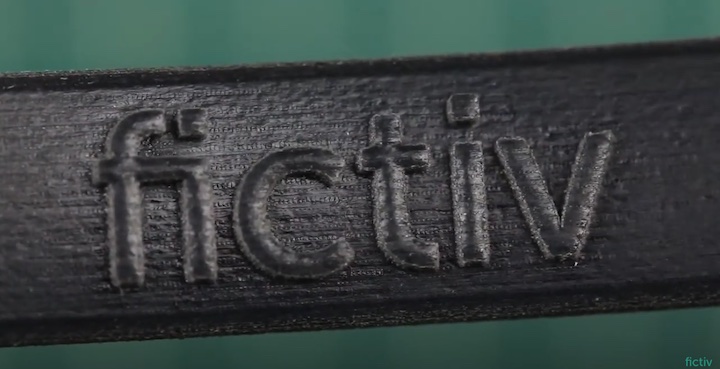
Polyjet materials include Vero
Polyjet Materials
Polyjet 3D printing can produce thin walls and complex geometries with a microscopic layer resolution and fine accuracy. Most Polyjet materials are available in two days or less and include:
- ABS-Like material is similar to injection-molded ABS and has a high resolution.
- Rubber-Like material is used to simulate rubbers between 27 and 95 Shore A.
- Vero has a 16-micron resolution, making it a good choice for visual models.
- VeroClear can replace clear parts or be used to produce light pipes.
Table 4 below lists Polyjet materials with available colors and lead times.
| SLS Material | Color | Lead Time |
| ABS-Like | Off-White | 2 days (standard) 1 day (rush) |
| Rubber-Like | Black | 2 days (standard) 1 day (rush) |
| Vero | White Black | 1 day |
| VeroClear | Clear | 2 days (standard) 1 day (rush) |
Polyjet materials from Fictiv
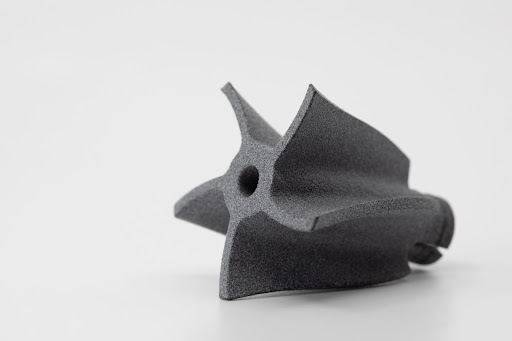
MJF materials include Polypropylene
MJF Materials
Multijet fusion (MJF) supports complex, lower-cost parts such as thin-wall ductwork and connectors. In addition to nylon and nylon 11, MJF materials include polypropylene.
- Nylon is a good choice for prototyping and bridge-level production.
- Nylon 11 is a non-biodegradable, polyamide bioplastic that is derived from vegetable oil.
- Polypropylene is durable with good chemical resistance and low moisture absorption.
The table below lists MJF materials with available colors and lead times:
| MFJ Material | Color | Lead Time |
| Nylon | Black Grey | 3 days |
| Nylon 11 | Grey | 9 days |
| Polypropylene | Grey | 9 days |
MJF Materials from Fictiv
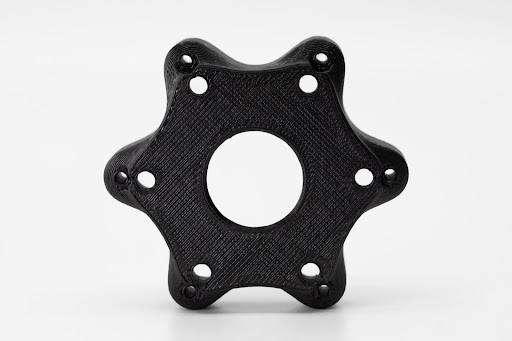
FDM materials include ABS ESD
FDM Materials
Fused deposition modeling (FDM) feeds a continuous filament of a thermoplastic through a heated printed extruded head so that the material is deposited on the growing work. FDM materials include:
- ABS is mechanically strong and cost-effective, making it a good choice for prototypes.
- ABS ESD, or ESD ABS, protects objects sensitive to electrostatic discharge (ESD).
- ASA is chemically similar to ABS but offers better mechanical properties and is UV resistant.
- PC+ABS is a flame-retardant blend of polycarbonate plastic and ABS.
- Polycarbonate (PC) combines impact resistance with transparency.
- PETG has the functionality of ABS and the cost-effectiveness of PLA.
- PLA is made of biodegradable corn starch and is ideal for inexpensive parts that do not need great accuracy.
The table below lists FDM materials with available colors and lead times:
| FDM Material | Color | Lead Time |
| ABS | Black White Neutral | 1 day |
| ABS ESD | Black | 3 days |
| ASA | Black Grey Natural White | 3 days |
| PC+ABS | Black White | 3 days |
| Polycarbonate (PC) | Black White | 3 days |
| PETG | Black White Neutral | 2 days |
| PLA | Neutral, White, Black, Blue, Red, Orange, Green, Pink, Aqua | 1 day |
FDM materials from Fictiv
Carbon DLS Materials
Carbon DLS 3D printing involves selectively curing a liquid polymer resin using digital light projection, similar to SLA 3D printing. The process creates a “dead zone” that allows layers to be built on each other without sticking to the platform, enabling easier part removal. Parts printed with carbon DLS offer high homogeneity and isometric properties, providing the same strength regardless of print orientation.
Pro-Tip: To learn more about the Carbon DLS process, check out our Guide to Carbon DLS 3D Printing.
The carbon DLS process is compatible with many proprietary materials that can be grouped in the following categories:
- Rigid Materials: EPX 82, EPX 86FR, RPU 70, Loctite 3D 3843, Loctite 3D IND147, Loctite 3D IND405, MPU 100, FPU 50, and UMA 90
- Elastomeric Materials: EPU 40, EPU 41, and SIL 30
The table below lists Carbon DLS materials with available colors and lead times:
| Carbon DLS Material | Color | Lead Time |
| EPU 40 | Black | 5 days |
| EPU 41 | Black | 5 days |
| EPX 82 | Black | 5 days |
| EPX 86FR | Black | 5 days |
| FPU 50 | Black | 5 days |
| MPU 100 | White | 5 days |
| RPU 70 | Black | 5 days |
| SIL 30 | Gray | 5 days |
| Loctite 3D IND405 | Clear | 5 days |
| Loctite 3D IND147 | Black | 5 days |
| Loctite 3D 3843 | Matte Black | 5 days |
| UMA 90 | WhiteBlack | 4 days |
Fictiv Delivers Complex 3D Printed Parts at Ridiculous Speeds
For even your most complex 3D printing needs, Fictiv has you covered. We’re experts at producing custom 3D printed parts with all the materials listed in this article, and we simplify custom part sourcing with intelligent, streamlined, automated workflows.
Fictiv is your operating system for custom manufacturing that makes procuring even the most complex parts faster, easier, and more efficient. Create an account and upload your design to see what our instant quote process, design for manufacturability (DMF) feedback, and intelligent platform can do for you.









